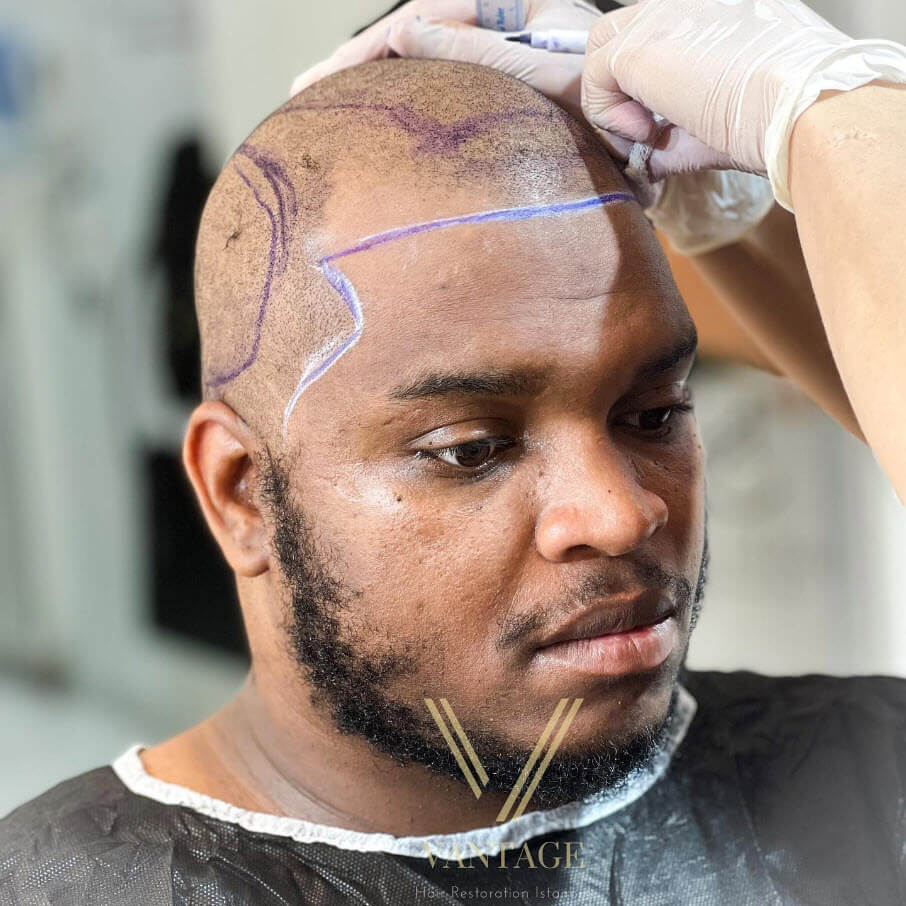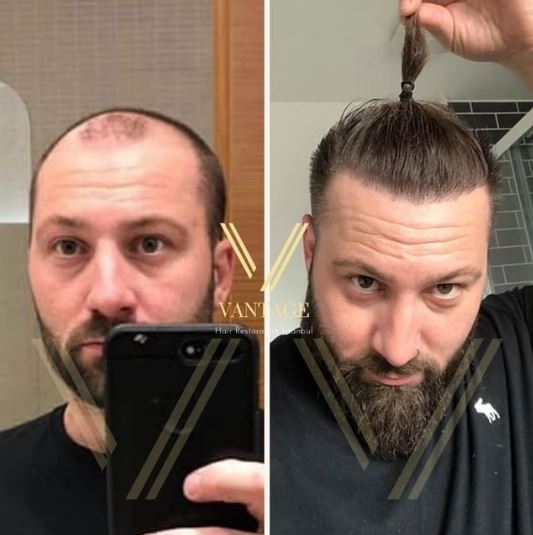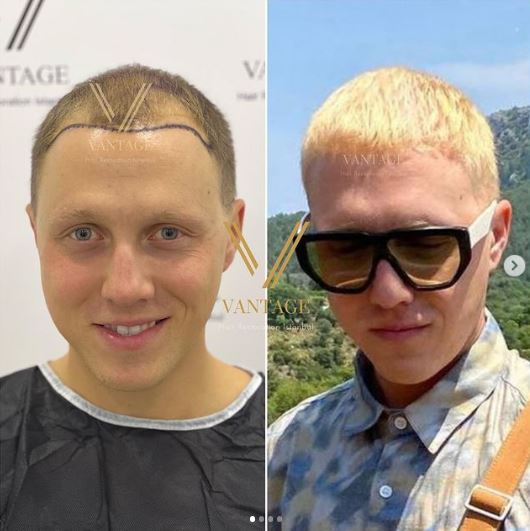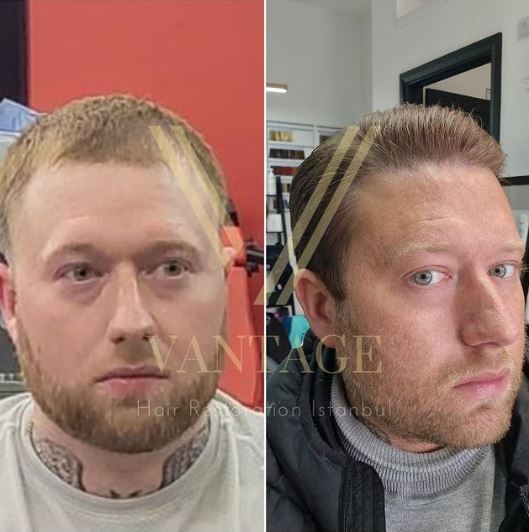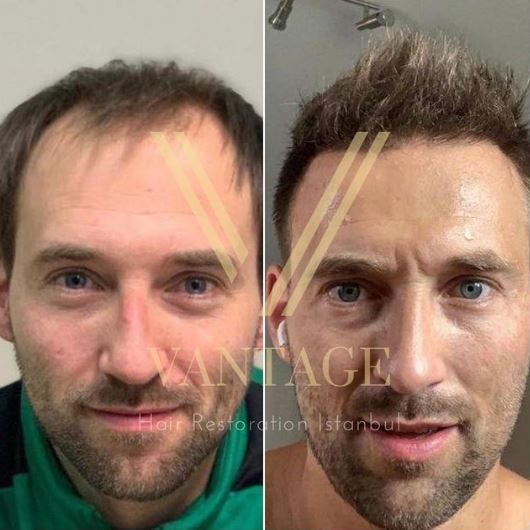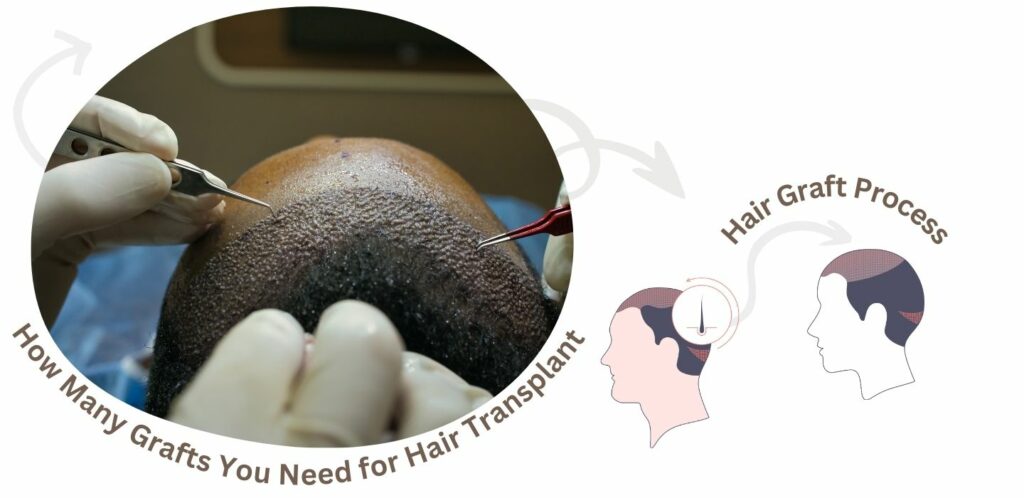
Before answering the questing How Many Grafts Do I Need for Hair Transplant? in details, let’s start with the definition of graft and Norwood and the relation between each other.
Graft and Norwood can be related terminologies in the context of hair restoration surgery, specifically in the treatment of male pattern baldness.
- Graft: In the context of hair transplantation, a graft refers to a small piece of tissue containing hair follicles that is surgically removed from a donor site (typically the back or sides of the scalp, where hair is more resistant to balding) and then implanted into a recipient site (the area where hair loss has occurred).
- Norwood Scale: The Norwood scale, also known as the Norwood-Hamilton scale, is a classification system used to describe the progression of male pattern baldness. It categorizes the stages of hair loss from minimal to extensive. The scale ranges from Type I (minimal or no hair loss) to Type VII (most severe hair loss), with various subtypes and patterns in between.
In the context of hair transplantation, the Norwood scale helps surgeons assess the extent of hair loss in a patient and plan the appropriate surgical approach. The number of grafts required for transplantation often correlates with the stage of hair loss as per the Norwood scale. For instance, patients in advanced stages of hair loss (higher Norwood types) may require a larger number of grafts to achieve satisfactory coverage compared to those in earlier stages. Therefore, the Norwood scale serves as a useful reference for both surgeons and patients in understanding the extent of baldness and planning the hair restoration procedure accordingly.
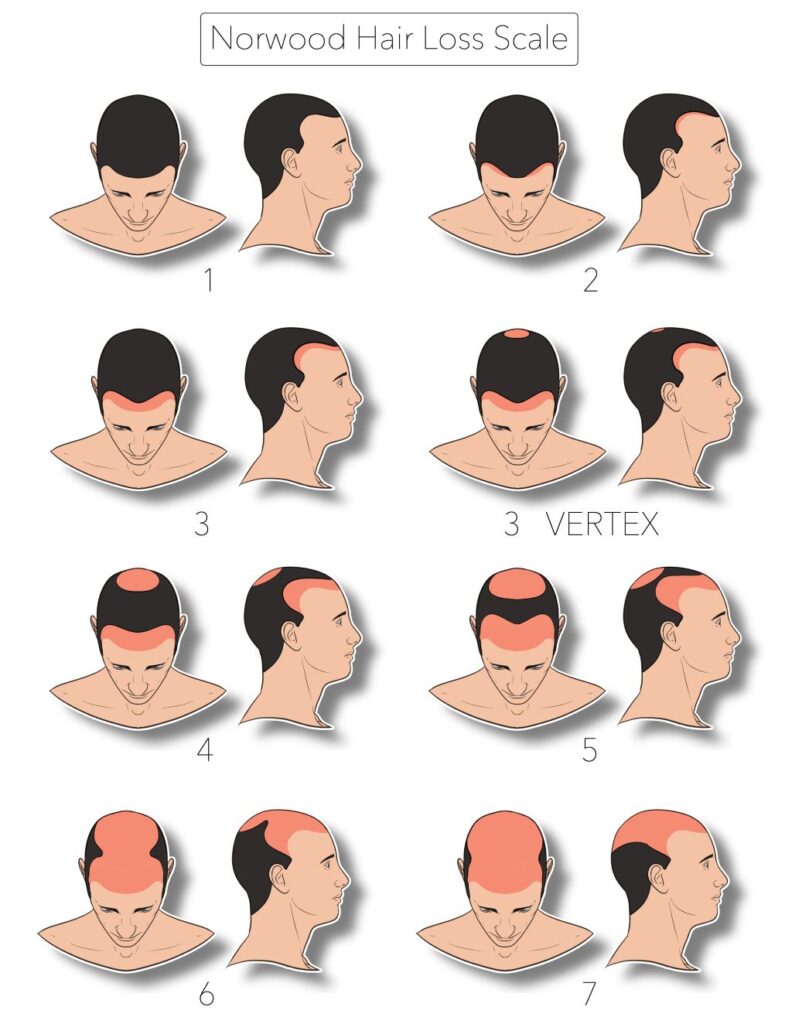
Navigating how many hair grafts you would need for a hair transplant is challenging. It is most likely that you have a pretty good idea about the end goal of your hair transplant but knowing what can get you there is another thing. To have a good idea about the number of hair grafts you would need, you first need to understand at what stage of hair loss you are on and what exactly is a hair graft.
The progress of hair loss is as important as the quality of hair grafts. This is because the thinned or balding area that needs covering will determine the number of required hair follicles to create the desired hair density. As a rule of thumb, the wider the transplant area, the more hair grafts you will need. The progress of hair loss can easily be determined by using the Norwood hair loss classification.
Norwood hair loss classification
The Norwood hair loss classification system is a useful source that guides clinicians and patients through the stages of male pattern baldness. Because people who are suffering from male pattern baldness go through similar stages of hair loss, you can easily pinpoint at which stage you are and what possibly awaits you in the future. Our medical team can make an accurate diagnosis and create a suitable treatment pathway using this classification system.
How many grafts do I need for a full head of hair?
A single follicular unit with multiple hairs is called a hair graft. Today, all modern hair transplantation procedures, like FUE, are based on transplanting hair grafts one by one. That’s why those units are valuable. If you have healthy hair grafts, you can have a natural and dense hair appearance thanks to various hair implantation methods.
Whether you are undergoing a DHI or FUE procedure, the health and number of existing hair grafts have an impact on the success of the hair transplant procedure, just like the safety of the clinic you choose. To understand the suitability of the hair grafts needed for a full head in the donor area, you can pay attention to two aspects:
- Is there at least one healthy hair follicle in the graft?
- Does the hair follicle have good vitality?
For a normal person who doesn’t have a specific health issue, grafts needed for a full head is around 4,000-6,000. Please note that this is completely an individual variable. Some may need only 2,000 grafts, while others need up to 12,000.
The size of the balding or thinned spot is different for each 7 stage cases in the Norwood Hamilton scale. They can indicate how many hair grafts you will need to achieve a full head of hair.
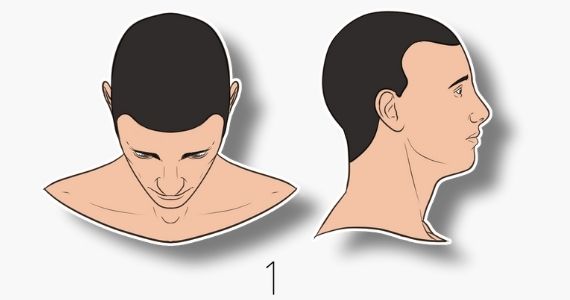
The Norwood stage 1 indicates the first signs of male pattern hair loss. The hairline slightly recesses but has no major effect on the overall appearance of the hair. At this stage, a hair transplant surgery is generally not recommended because further progress of hair loss should be observed before making any decisions.
However; if hair loss is stabilised and there are no signs of further hair loss, up to 1000 hair grafts should be enough to restore the hairline.
Norwood 1 – Hair Transplant Cost
Norwood stage 1 hair transplant is not as popular as the other levels of baldness since people wait until the hair loss is more obvious. As the number of needed grafts is low and the operation takes shorter time, the cost of Norwood stage 1 operation is cheaper, between $1500 – $1900 in Turkey.
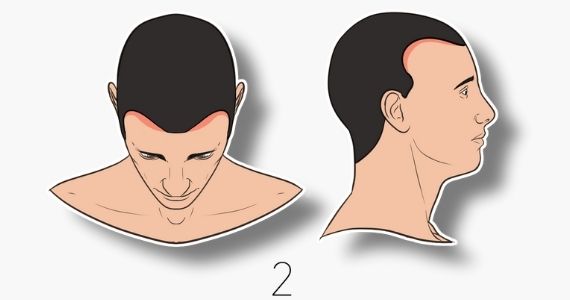
At Norwood type 2 minor signs of male pattern baldness can be observed. The earlier form of M, V, or U shape hair loss starts to shape at this stage.
It is important to remember that hair loss can still progress and a hair transplant can lead to an undesired look in the future.
If you want to get a hair transplant anyway and there are no signs of further hair loss, up to 2000 hair grafts are usually enough to cover the balding areas.
Norwood 2 – Hair Transplant Cost
Norwood stage 2 hair transplant is also considered hairline restoration operation. The operation takes shorter time than an average hair transplant, and the cost of Norwood stage 2 operation is between $1600 – $2000 in Turkey.
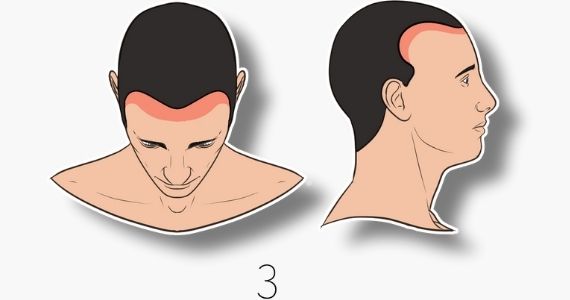
The typical U, V, or M shape of the male pattern baldness usually forms at type 3 of the Norwood scale. At this point, the effect of androgenetic hair loss is quite noticeable.
A hair transplant operation can be beneficial to restore the frontal appearance of the hair. At this stage, around 3000 hair grafts are usually transplanted to achieve a dense natural hairline.
Norwood 3 – Hair Transplant Cost
Norwood stage 3 hair transplant is one of the most popular choices and it provides brilliant results. The operation takes 5-6 hours and the average cost of Norwood stage 3 operation is $1700 – $2100 in Turkey.
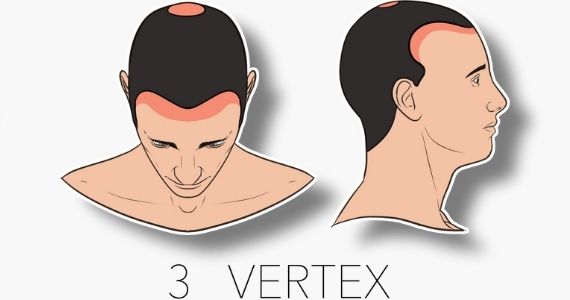
At the Norwood type 3-vertex, the frontal hairline is similar to Norwood stage 3, but there is also significant hair loss at the top of the head; this area is also known as the vertex or crown area.
To achieve a full head of hair a total of 2500 – 3500 graftscan be sufficient depending on the hair loss of the crown area.
Norwood 3 Vertex – Hair Transplant Cost
Norwood stage 3-Vertex hair transplant is also one of the most popular procedures. The operation takes about 6 hours and it costs $1800 – $2100 in Turkey.

At Norwood type 4, hair loss at the vertex and along the hairline progresses and leaves a thinner band of hair in between.
Usually, around 4000 hair grafts need to be transplanted to obtain a dense and natural look.
Norwood 4 – Hair Transplant Cost
Clearly, Norwood stage 4 hair transplant is the most popular option amongst all hair loss levels as people find their crown and frontline empty. The operation takes about 6-7 hours and it costs $1900 – $2200 in Turkey.
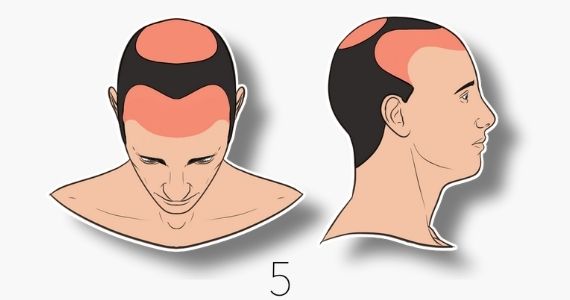
Norwood type 5 indicates a much thinner hair in between the vertex and frontal hairline.
To achieve a full head of hair, 4000 to 5000 hair grafts should be transplanted. If the donor area is healthy enough, 5000 hair grafts can also be transplanted for higher density.
Norwood 5 – Hair Transplant Cost
Norwood stage 5 hair transplant requires up to 5000 grafts and due to that reason it can take longer than other hair transplant surgeries. The operation takes about 7-8 hours and it costs $2000 – $2300 in Turkey.
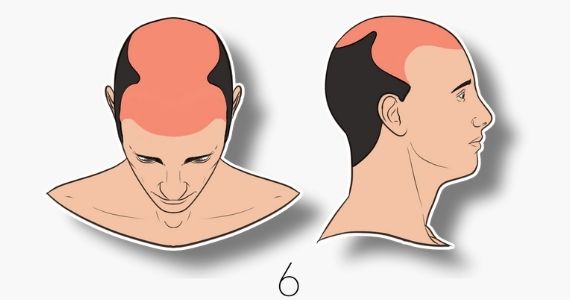
At Norwood type 6, the bald areas at the vertex and the front merges and create a large bald area.
5000 to 6000 hair grafts are usually required to cover such a large area. You should be aware that at this stage it might be challenging to create a dense full head of hair.
Norwood 6 – Hair Transplant Cost
Norwood stage 6 hair transplant is considered a mega session. The operation takes longer time than an average hair transplant, about 9 hours. The cost of Norwood stage 6 operation is between $2100 – $2400 in Turkey.
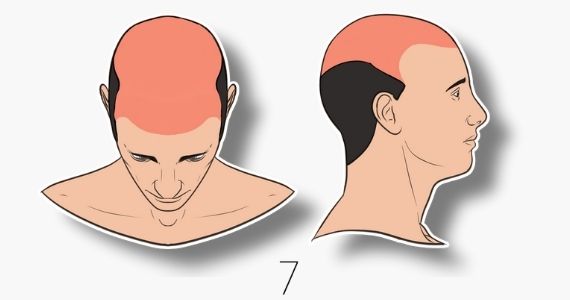
The Norwood type 7 is the most intense version of male pattern baldness. Only the sides and back of the head are covered while the top is completely bald.
A minimum of 7000 hair grafts is needed divided into two hair transplant sessions to restore a natural hairline. However, keep in mind that this operation requires a healthy donor area and high clinical expertise.
Norwood 7 – Hair Transplant Cost
Norwood stage 7 hair transplant is generally for completely bald candidates. The duration of the operation is generally related to the number of healthy grafts of the patient, and takes the longest time as the surgeon may need to extract hair follicles from the beard. The cost of Norwood stage 7 operation is between $2200 – $2500 in Turkey.
How much does a hair transplant surgery cost?
The cost of hair transplant depends on multiple variables such as the number of grafts needed, technique used, experience of medical team, whether it’s shaved or unshaven etc. However, the most important indicator is the level of baldness that is measured by the Norwood scale. You can see the approximate hair transplant costs in Turkey per Norwood hair loss level below:
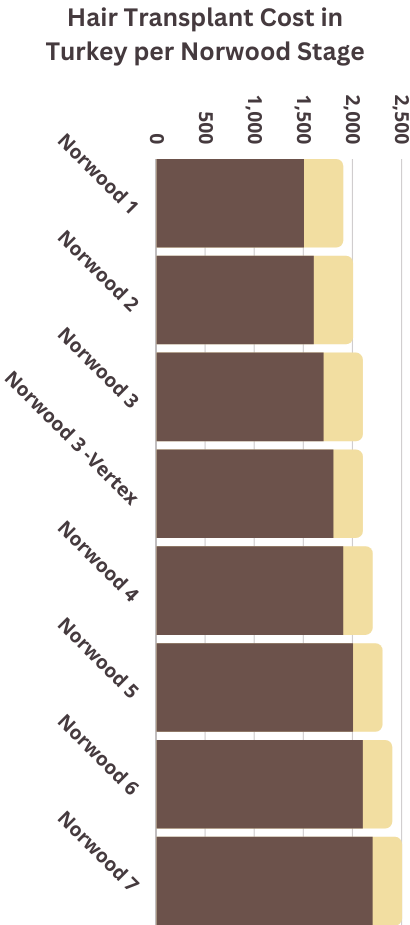
How many grafts do I need for the crown?
Crown hair transplantation is a very common procedure. It is the process of removing individual hair follicles from donor areas on the back and sides of the head with pen-like tools. The follicles are then implanted into the crown area, creating a denser appearance there. Within one to one-and-a-half years, the implanted follicles grow and cover the crown area.
Some men might be more bothered by the thinned or balding hair at the crown area as opposed to hair loss around the frontal hairline. In this case, the number of hair grafts needed for the crown can vary between 500 and 2500 grafts depending on the size of the area. The number of healthy grafts in your donor area can also affect the quantity of hair that can be transplanted.
Not everyone with receding hairlines is worried about the frontline. Some care more about filling in that bald spot on the crown of their head. The main indicator is how big the crown area is for transplantation. If the area is small, around 500 grafts might be enough, but for some, up to 2500 grafts may be needed. However, the availability of a healthy donor area is crucial for a successful operation. Without a healthy donor area, achieving satisfactory results may not be possible.
You can contact us right now to receive excellent professional service from start to finish for crown and frontal hair transplantation.
How many grafts do I need for the hairline?
The hairline has a huge impact on a person’s appearance. Receding hairline can make a person look older than they really are. This is why thousands of men come to Turkey every year to get a hairline transplant.
Since factors such as one’s head size, health status, and the average number of follicles in the graft vary; therefore, the number needed for the hairline may also be different. At the same time, some variables also affect the number of grafts to be removed from the person. Number of grafts needed for the hairline may vary depending on the factors below:
- whether the donor area is healthy,
- the degree of hair loss of the person,
- the person’s dream hairline appearance
Male pattern baldness usually starts in the hairline and temples. The number of grafts needed for the hairline is about 500 to 1,800 to make the forward part of the head look fuller and more natural. The exact number may depend on those:
- how much hair loss there is
- the desired appearance.
Recovering from a receding hairline can make a great impact on your overall appearance. Similar to the vertex area, the number of required grafts for the hairline can change between 1000 to 3000 hair grafts.
How many grafts for a full beard?
Beard transplantation is the transplantation of hair follicles taken from the back of the hair or another suitable part of the body to the beardless areas of the face. Beard transplantation is performed under local anesthesia, just like hair transplantation, and according to the number of grafts required for a full beard. It has the same steps just like hair transplantation.
Existing facial hair and personal preferences determine the number of grafts needed for a full beard. Let’s say you want a relatively thin beard. In such a case, to achieve your goal, the number of grafts you need: 1,500 to 2,000.
If you want a thicker beard, then 2,500 to 3,000 grafts may be considered. Don’t forget, it can change according to the desired style and coverage. Because beard transplantation has exactly the same techniques as hair transplantation, the steps are alike. In this application, a process path is followed in the same way. It is possible to briefly explain these procedures respectively as follows;
- Preliminary examination before beard transplantation,
- Blood collection and tests before beard transplantation,
- Providing local anesthesia with a painless anesthesia procedure,
- Determination of the area to be transplanted
- Calculation of the number of grafts,
- Hair follicles are collected from the donor area and kept in transplant solution,
- Transplantation of the collected grafts to the beardless area with sapphire percutaneous beard transplantation technique.
How many grafts are needed for a half head?
Depending on your specific situation, the number of grafts required for a half-head transplant may differ. This variation comes down to two main factors:
- the extent of your hair loss
- the desired hair density in the transplanted area.
A small amount of graft is usually sufficient to provide a slight improvement in hair coverage. On the other hand, a larger area at the crown or frontal scalp may require significantly more grafts. As a further example, you can consider the greater amount of grafts needed to achieve a denser hairline.
The number of grafts needed for a half head of hair restoration vary based on the extent of hair loss. Typically, 2,000 to 2,500 grafts are suitable for moderate hair loss affecting the top or crown. Extensive hair loss in a larger area may require 3,000 to 4,000 grafts or more.
A qualified hair transplant surgeon can determine the precise number of grafts needed for your half-head transplant during a consultation. They may apply those steps in order:
- meticulously examining your scalp to assess the degree of hair loss and the quality of the donor area,
- checking the suitability of where healthy hair follicles will be extracted for transplantation,
- applying blood tests and other assessments
- sharing the final decision with you.
How much hair is in 1 graft?
The number of hair follicles in a hair graft determines the graft quality and hair density. Usually, 1 graft contains 2 to 5 hairs. The number of hair follicles in a hair graft determined the hair quality and density. This is why the condition of the hair grafts is crucial for a hair transplant operation.
How many grafts per cm2?
The number of grafts required per square centimeter (cm²) in a hair transplant varies based on desired hair density. Generally, 25 to 40 grafts per cm² provide a natural density. For denser results or severe hair loss, 40 to 60 grafts per cm² or more may be necessary.
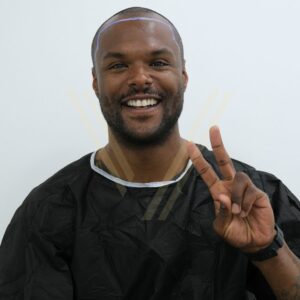
How much area can be covered with how many grafts?
Here’s a guideline for the coverage area and corresponding Norwood scale stages for graft numbers ranging from 1000 to 7000:
1000 Grafts
Coverage Area: Small to moderate-sized area
Norwood Scale Stage: Typically suitable for early-stage Norwood patterns, such as Norwood 1, addressing receding hairlines.
2000 Grafts
Coverage Area: Moderate-sized area
Norwood Scale Stage: Suitable for Norwood 2 or early Norwood 3 stages, covering receding hairlines and frontal areas.
3000 Grafts
Coverage Area: Moderately-sized area
Norwood Scale Stage: Appropriate for Norwood 3 or early Norwood 4 stages, addressing larger frontal areas and moderate to advanced hair loss.
4000 Grafts
Coverage Area: Moderate to large-sized area
Norwood Scale Stage: Suitable for advanced Norwood 4 or early Norwood 5 stages, covering frontal and mid-scalp regions.
5000 Grafts
Coverage Area: Large-sized area
Norwood Scale Stage: Appropriate for advanced Norwood 5 or early Norwood 6 stages, providing extensive coverage for frontal and mid-scalp areas.
6000 Grafts
Coverage Area: Large to very large-sized area
Norwood Scale Stage: Suitable for advanced Norwood 6 stages, addressing significant hair loss in the frontal, mid-scalp, and crown regions.
7000 Grafts
Coverage Area: Very large-sized area
Norwood Scale Stage: Appropriate for advanced Norwood 7 stages, offering comprehensive coverage for extensive hair loss across the entire scalp.
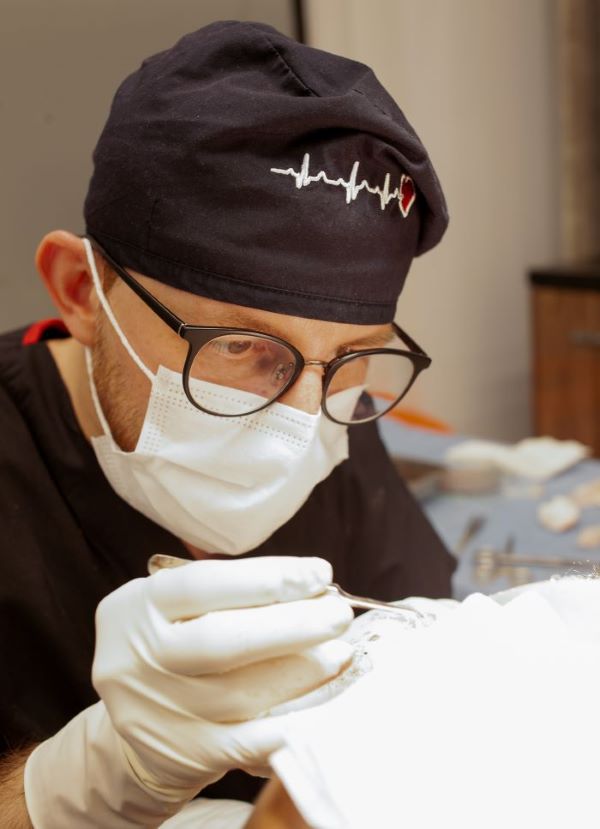
What are the treatment options other than hair transplant?
Alternative treatment options for hair loss can be benficil, especially at the early stages of hair loss. The most popular treatment options among these alternatives are the hair loss medications and platelet-rich plasma (PRP) treatment.
Hair Loss Medications
Some medications such as minoxidil and finasteride can help improve hair growth and reduce hair loss.
Minoxidil works by shortening the resting phase of your hair growth cycle and moving your hairs into the active growth phase by improving the blood flow to the hair follicles.
Finasteride inhibits the conversion of testosterone to dihydrotestosterone (DHT) which is the hormone that can cause male pattern baldness.
If you are hesitant about hair transplant surgery you can opt for these medications or other alternatives.
PRP Hair Treatment
The PRP hair treatment uses a person’s own blood plasma to stimulate hair growth. The plasma is a great agent to nourish the hair follicles and improve hair quality.
Because PRP treatment is an effective non-surgical option, many people prefer this option before and after getting a hair transplant.
PRP is not a one-time treatment if you are willing to slow down your hair loss. That’s why the sessions needs to be done on an ongoing basis to achieve significant results.
How many grafts does the average person have?
The number of hair grafts a person has can vary significantly among individuals. On average, a person may possess approximately 90,000 to 150,000 hair follicles on their scalp. However, various factors, such as genetics, ethnicity, and sex, can influence the density and distribution of hair follicles.
How many donor grafts does the average person have?
On average, the number of donor grafts an individual has can range from approximately 8,000 to 10,000 grafts. However, this estimate varies based on factors like genetics, hair density, and donor area size. A consultation with a qualified hair transplant surgeon is necessary to determine the specific number available for transplantation.
How many days after hair transplant are grafts secure?
Graft security post-hair transplant gradually improves over time. Initially, grafts are delicate and require careful handling. From the third to the fifth day after the procedure, they start forming bonds with the surrounding tissue, becoming more secure. By the end of the second or third week, grafts are generally well-anchored, allowing patients to resume regular hair care routines.
How many hair grafts can I get in one session?
The number of grafts you can get in one session depends on some factors like the available donor area and the scalp laxity. Additionally, the expertise of your surgeon can also contribute to the success of the procedure. There’s a limit to the safe extraction and transplantation of grafts within a single session.
In one hair transplant session, you can obtain 5000 to 6000 grafts. The exact number depends on factors like
- donor area availability,
- graft quality,
- surgical technique,
- your overall health.
This range is determined taking into account the workload on both the scalp (donor area) and the surgical team. Pushing the number of grafts you can take in one session too far can lead to scarring in the donor area and fatigue in the medical team. Unfortunately, the quality of the grafts may decrease as a result, and damaged grafts lead to an unsuccessful operation.
During the consultation, you can determine the ideal number of grafts needed in one session. The surgeon will assess those to determine the appropriate number of grafts you can get in one session.:
- your scalp characteristics,
- hair loss pattern,
- desired outcome
Remember, achieving optimal results may require multiple sessions depending on the extent of your hair loss.

Don’t wait any longer, contact us today to schedule a consultation and take the first step towards a fuller head of hair with a younger look of yourself! Feel free to take a look into hair transplant growth timeline to see what future beholds! You can either reach us on our contact form or click on the WhatsApp icon above for instant communication. Our team of experts will be more than happy to answer any questions you may have!

